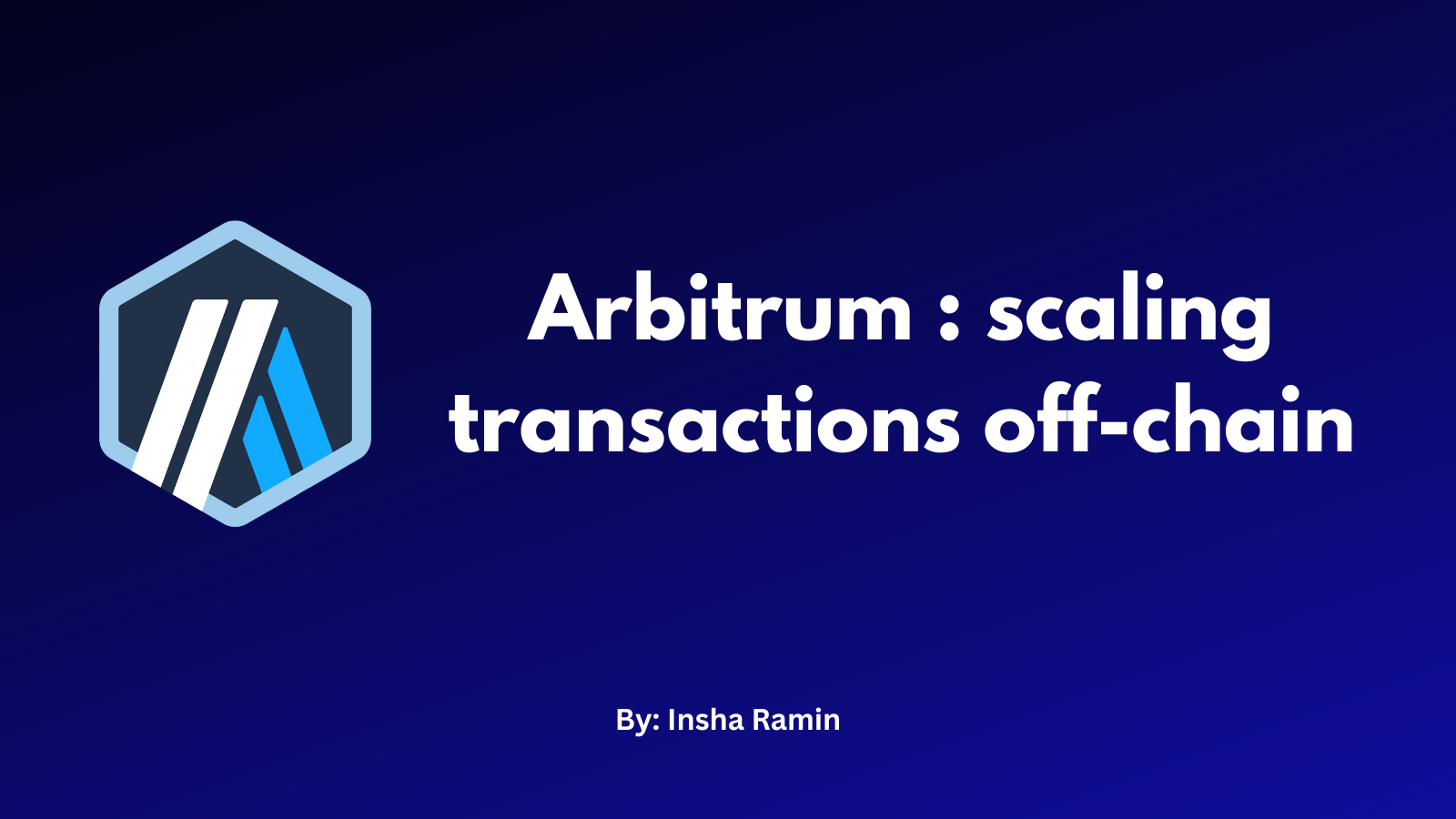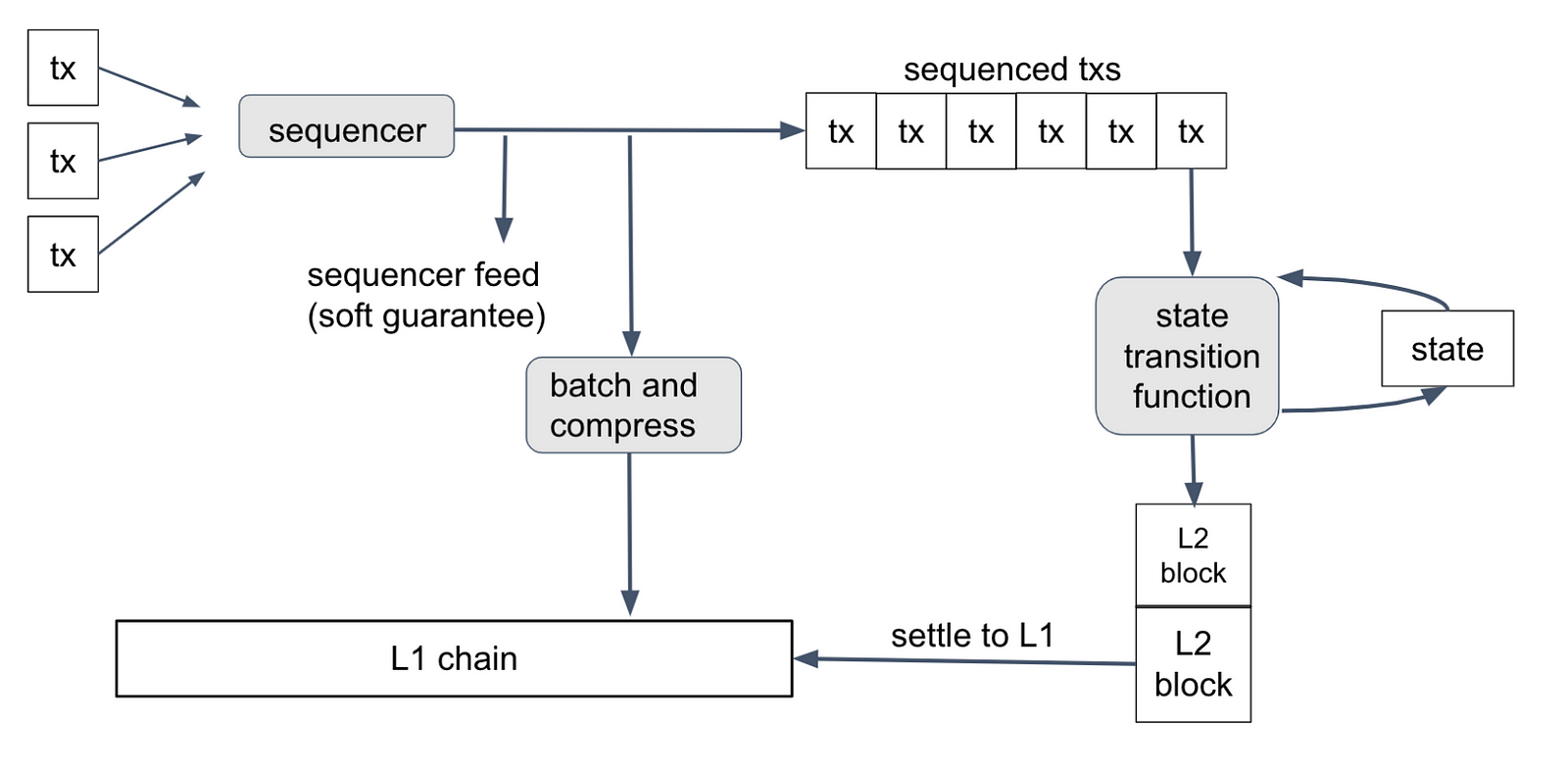Arbitrum: Scaling Transactions Off-Chain
 Insha Ramin
Insha Ramin
Scaling has long been a challenge for Ethereum due to its current limitations in transaction processing speed and high fees. These bottlenecks have prompted the community to explore Layer 2 solutions.
These solutions aim to offload a significant portion of transactions from Ethereum to a secondary layer without sacrificing the mainnet’s security.
In this article, we’ll delve into the intricacies of Arbitrum, exploring its functionality and examine how it enhances Ethereum’s performance and usability.
A brief history of the Arbitrum network
Arbitrum was co-founded back in 2021 by Ed Felten, Steven Goldfeder and Harry Kalodner, the team of well-known blockchain researchers and engineers behind the company Offchain Labs.
This Layer 2 scaling solution was created to address main problems that plague Ethereum such as network congestion and high gas fees, without compromising the network’s security.
What is Arbitrum?
Arbitrum is an Ethereum Layer 2 scaling solution designed to improve transaction throughput and reduce fees. It operates on top of Ethereum, allowing for faster and cheaper transactions while maintaining the security and decentralization of the Ethereum network.
Arbitrum is an Optimistic Rollup that assumes transactions are valid by default and relies on fraud proofs to catch any incorrect transactions.
But wait, what’s optimistic rollup in the first place?
Optimistic Rollup Explained
Optimistic rollups are off-chain scaling solutions built to operate on top of Ethereum. They execute transactions outside of Ethereum, but post transaction data to an on-chain rollup contract.
Optimistic rollups are considered “optimistic” because they assume off-chain transactions are valid by default and relies on fraud proofs to catch any incorrect transactions. However, there’s a “challenge period” during which participants can dispute a transaction’s validity. This acts as a fraud-proving mechanism.
Unlike regular, layer 1 ( “L1”) Ethereum transactions, Arbitrum don’t require Ethereum nodes to process every transaction; rather, Ethereum adopts an “innocent until proven guilty” attitude to Arbitrum.
How Arbitrum Works:
When a rollup block is submitted on Ethereum, there’s a 7-day challenge window before it’s final.
Why? 🤔
Optimistic rollups assume all transactions in a block are valid. They submit blocks to Ethereum without proofs that transactions are valid.
Proofs cost money, so not doing them means cheaper fees for users.
This is called the Fraud Proof System: It allows anyone to challenge the correctness of a transaction after it has been executed.
During the challenge window, participants can prove a transaction isn’t valid.
Validators monitor the network to ensure the rollup blocks submitted to Ethereum are correct. They submit transaction batches to Ethereum and are incentivized to act honestly through stakes and challenges.
This dispute game obviously takes some time; does this impose any sort of delay on Arbitrum users’ transactions?
The only delay that’s felt by a user is in “withdrawing” — moving their funds from Arbitrum back to Ethereum; if users are withdrawing directly from Arbitrum to Ethereum, they must typically wait 1 week before receiving their funds on L1.
The Lifecycle of an Arbitrum Transaction
Rollup block production on Arbitrum is managed by a single sequencer.
Sequencers are responsible for ordering transactions and proposing new blocks. They ensure the rollup operates efficiently and transactions are processed quickly.
Let’s understand the lifecycle with a diagram:

Users submit transactions (tx) to the Arbitrum network.
The sequencer collects these transactions and orders them, providing a soft guarantee about the sequence in which transactions will be processed.
The sequenced transactions are batched together and compressed, reducing the data size and making it more efficient to handle.
The sequencer submits the block to Ethereum L1.
The batched transactions are processed by the state transition function, which updates the state of the blockchain based on the transactions.
Validators monitor the rollup blocks submitted by the sequencer and can dispute transactions during a challenge window of 7 days. If unchallenged, the block is finalized on Ethereum.
Arbitrum: Like a Blockchain, But Not a Blockchain
Although Arbitrum shares similarities with traditional blockchains, it operates differently in several key ways:
Verifies Transactions Off-Chain: Arbitrum uses its own mechanisms to verify transactions off-chain. This process is managed by the Sequencer, which orders transactions and ensures they are processed efficiently.
Batches Transactions: Transactions are bundled into batches, often referred to as rollup blocks, and periodically posted to the Ethereum blockchain. This batching reduces the cost and data size of transactions when settling on Ethereum’s L1.
Different Verification Methods: While Ethereum uses a Proof-of-Stake (PoS) consensus with validators to verify transactions, Arbitrum employs the Sequencer to create blocks. These blocks are then submitted to Ethereum L1 for validation.
Why Ethereum needs Arbitrum’s help?
Ethereum is decentralized and secure, but it struggles on the scalability. It can process only about 15–30 transactions per second (TPS), which is insufficient to meet the growing demand. During periods of high activity, the network becomes congested, leading to slower transaction times and increased fees.
Arbitrum alleviates network congestion by moving the bulk of transaction processing off-chain. This offloading reduces the burden on Ethereum’s L1, ensuring that the network remains more responsive and efficient even during periods of high demand.
With Arbitrum Ethereum can handle more transactions for less.
How Arbitrum Achieves Scaling?
Arbitrum makes Ethereum faster and cheaper by processing transactions on it’s Layer 2 in batches, but still using the main Ethereum chain to ensure everything is correct.
Bundling Transactions: Grouping many transactions together to save space
Using a Sequencer: Quickly ordering and confirming transactions
Checking Mistakes: Allowing anyone to challenge and correct mistakes with fraud proofs
Posting Key Data On-Chain: Ensuring transparency and security by posting critical data on Ethereum
Withdrawals: Providing a way to securely move funds back to the main chain
What makes Arbitrum unique?
Ethereum Virtual Machine (EVM) Compatibility:
The Arbitrum’s Virtual Machine (AVM) serves as the execution environment for smart contracts on the Arbitrum network. It is fully compatible with the Ethereum Virtual Machine (EVM), which means that developers can deploy existing Ethereum smart contracts on Arbitrum with minimal modifications.
Programming Languages:
In addition to supporting Solidity, Arbitrum’s latest technology stack, Stylus, allows developers to write smart contracts in other popular programming languages like Rust, C, and C++. This flexibility broadens the developer base and enhances innovation on the platform.
Decentralized Governance:
Arbitrum’s governance model is decentralized and powered by its native token, ARB. Token holders can participate in the decision-making process by voting on proposals, fee adjustments, and other protocol changes.
This model ensures that the community has a say in the platform’s development and future direction.
Conclusion
Arbitrum effectively addresses Ethereum's scalability issues by offloading transaction processing to a Layer 2 solution while maintaining high security and decentralization.
Users can utilize Arbitrum with all their preferred Ethereum wallets, and developers can build and deploy contracts using their favorite Ethereum libraries and tools. In most cases, the experience of using Arbitrum will feel very similar to using Ethereum, with the significant advantage of being much cheaper and faster.
For more detailed information, you can explore the Official documentation.
Subscribe to my newsletter
Read articles from Insha Ramin directly inside your inbox. Subscribe to the newsletter, and don't miss out.
Written by

Insha Ramin
Insha Ramin
Insha is a backend developer who specializes in building communities that drive shared value between developer-centric organizations and their users, aiming to enhance engagement, satisfaction, and retention. Proficient in Python and well-versed in web technologies including HTML, CSS, JavaScript, Django and SQL, she brings a dynamic skill set to the table.